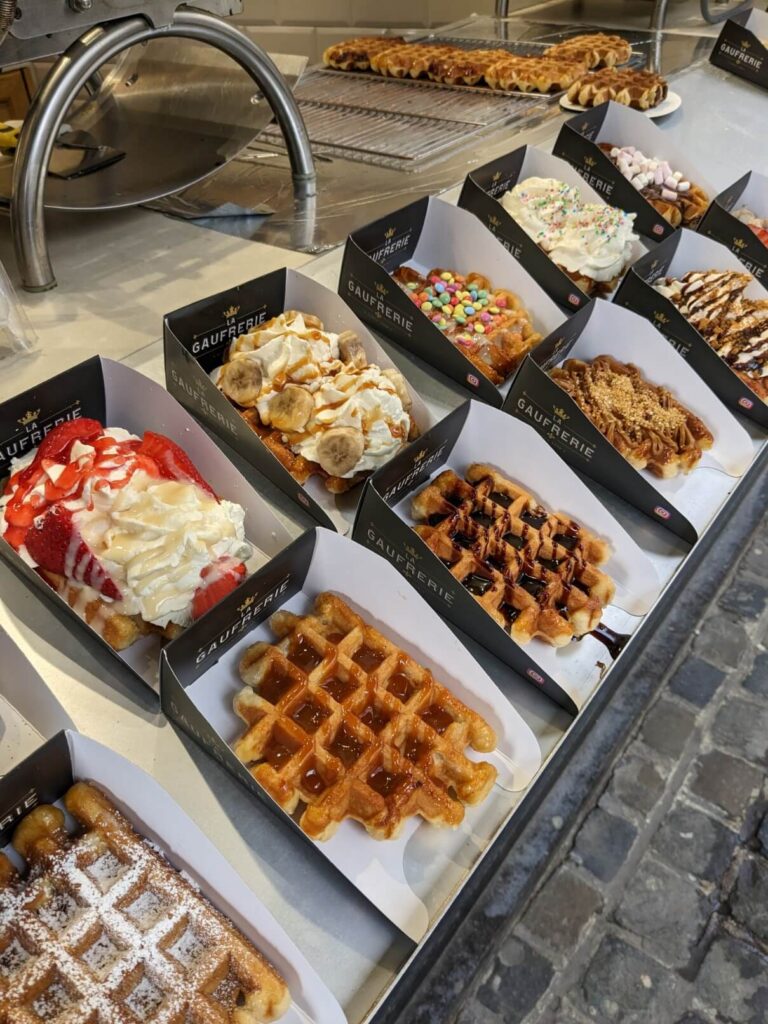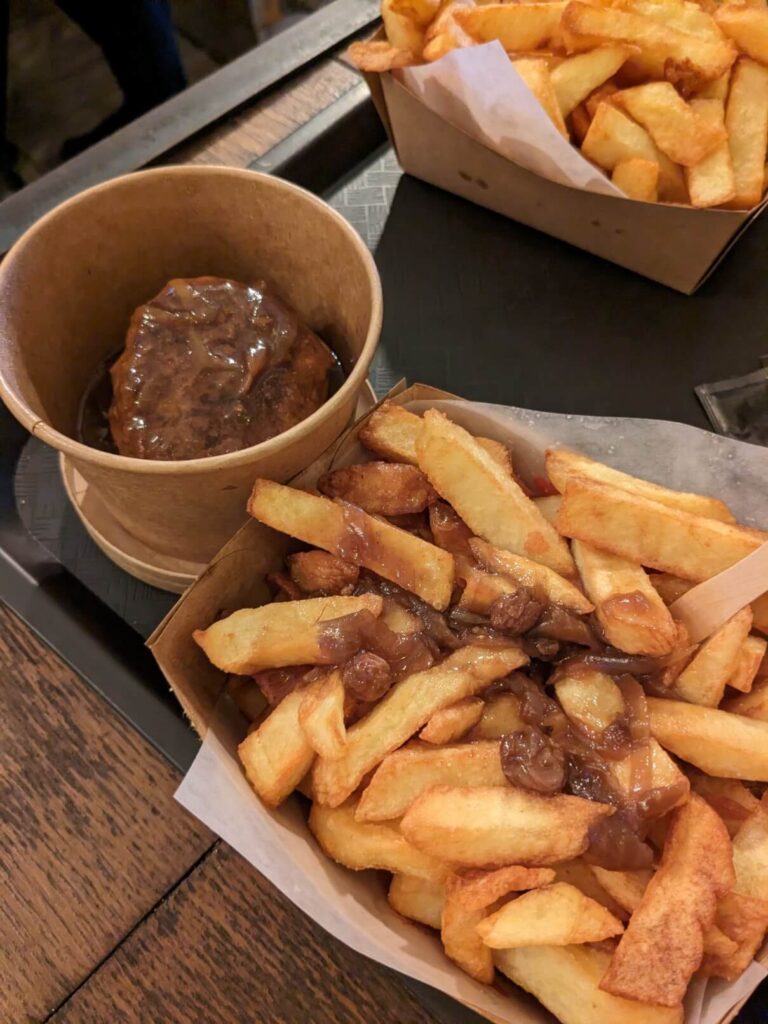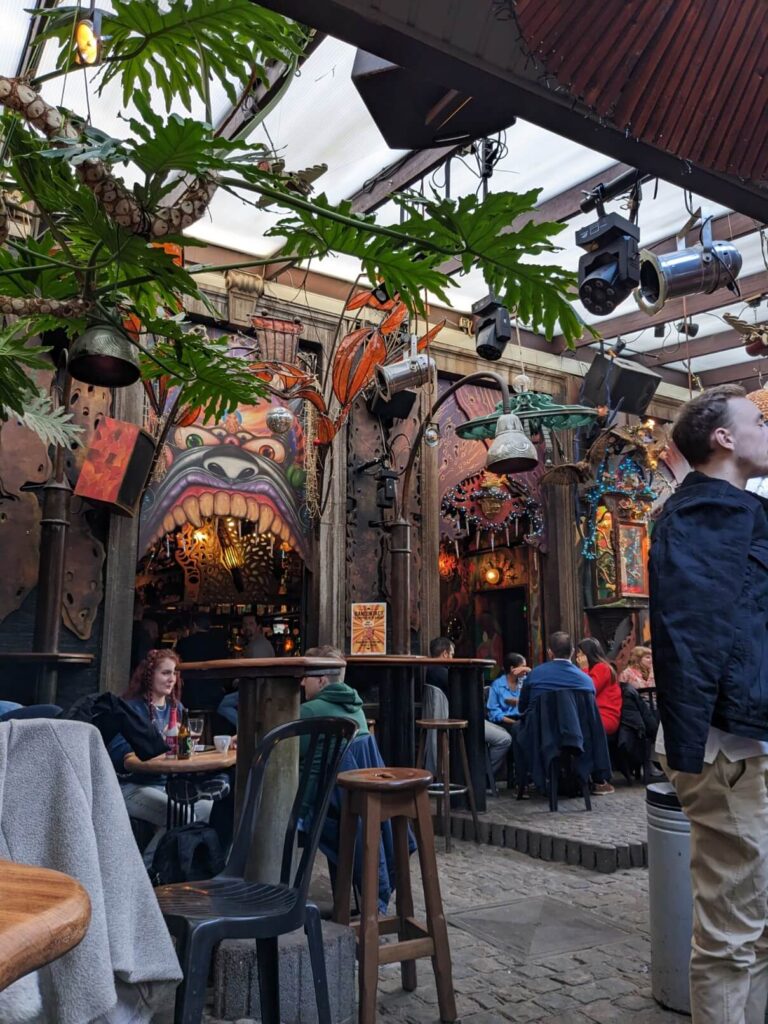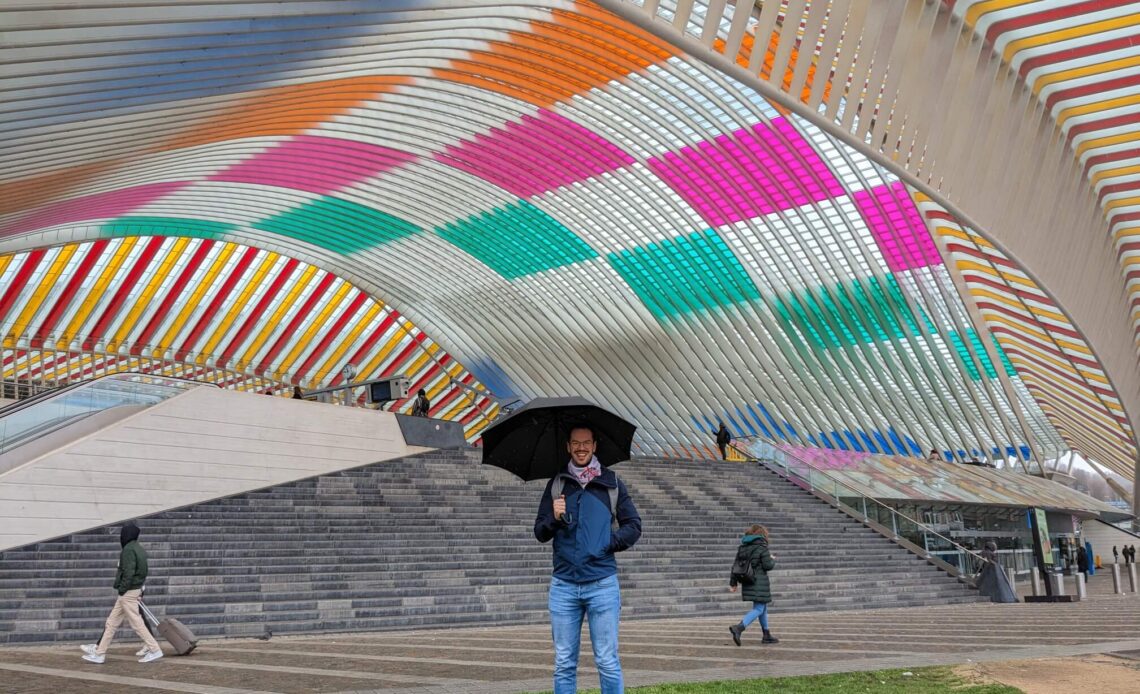
Why spend a day in Liege? At first glance, it seems like there aren’t too many reasons to add this Belgian city to the top of your must-visit list. Our reasons for visiting Liege were simple: close proximity to Cologne, accessible and cheap(ish) to get to, and French-speaking (therefore feeling a bit more like a weekend “abroad”). Our hopes weren’t high, but I was genuinely surprised at how much I liked Liege, and I think it makes a great destination for a relaxed day trip.
I heard a lot of luke-warm things about Liege before visiting (in March 2023), so I wanted to offer a differing perspective: why I liked the city and what to do in Liege for a day.
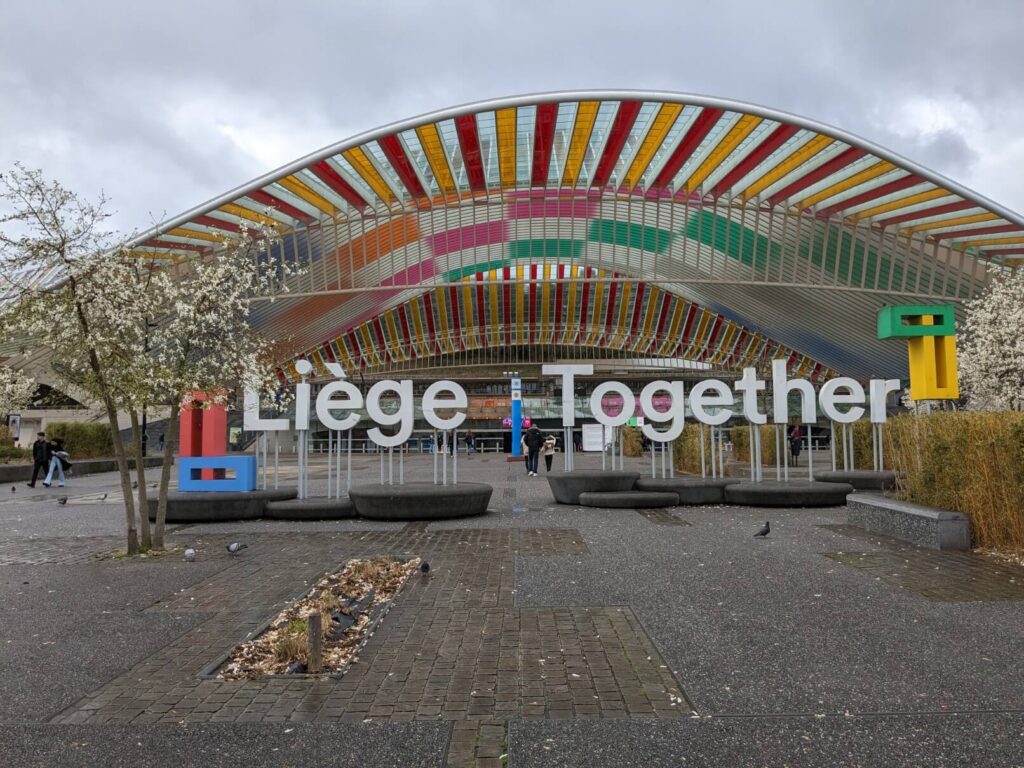
Where is Liege and how to get there?
But first things first: where and what is Liege? Now if you’re coming from Germany, you might know the city by its German name of Lüttich (which I personally have an easier time pronouncing) but Liege is actually the fourth biggest city in Belgium, located in French-speaking Wallonia.
You might think, considering its location (its only about a twenty-minute drive from the Dutch border and not much further to the German city of Aachen), the city might not be quite as monolingual as say, France. But you’d be wrong. Expect only French.
But if nothing else, thanks to its location, Liege is pretty well-connected with international Flixbus services and the train station is a stop for the Eurostar (formerly Thalys) train connecting Düsseldorf and Cologne with Paris and Brussels.
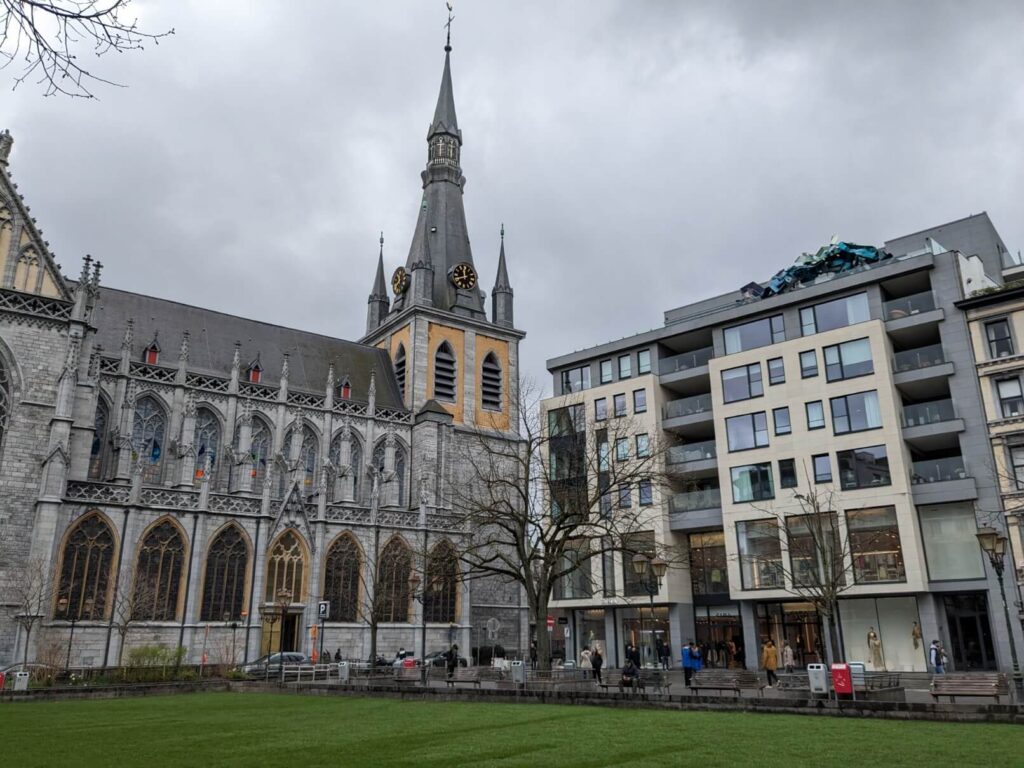
Things to do and see on a day trip in Liege
So what exactly is there to do on a day trip to Liege? Here is a run down of the things we did on our day trip from Cologne.
First stop: the Liège-Guillemins train station
Our first stop (literally) was Liège-Guillemins station, which it has to be said, is a bit of a sight in itself. I’m not exactly sure why a mid-size city needs such a huge statement of a train station, but it is pretty impressive. It was built by controversial architect Santiago Calatrava and consists of a huge sweeping arc-like structure, fitted with colourful panels. The whole thing is very open and has some great arch-ways and sweeping stairs. Definitely worth a few Instagram stories. Very probably one of Europe’s most impressive train stations IMO.
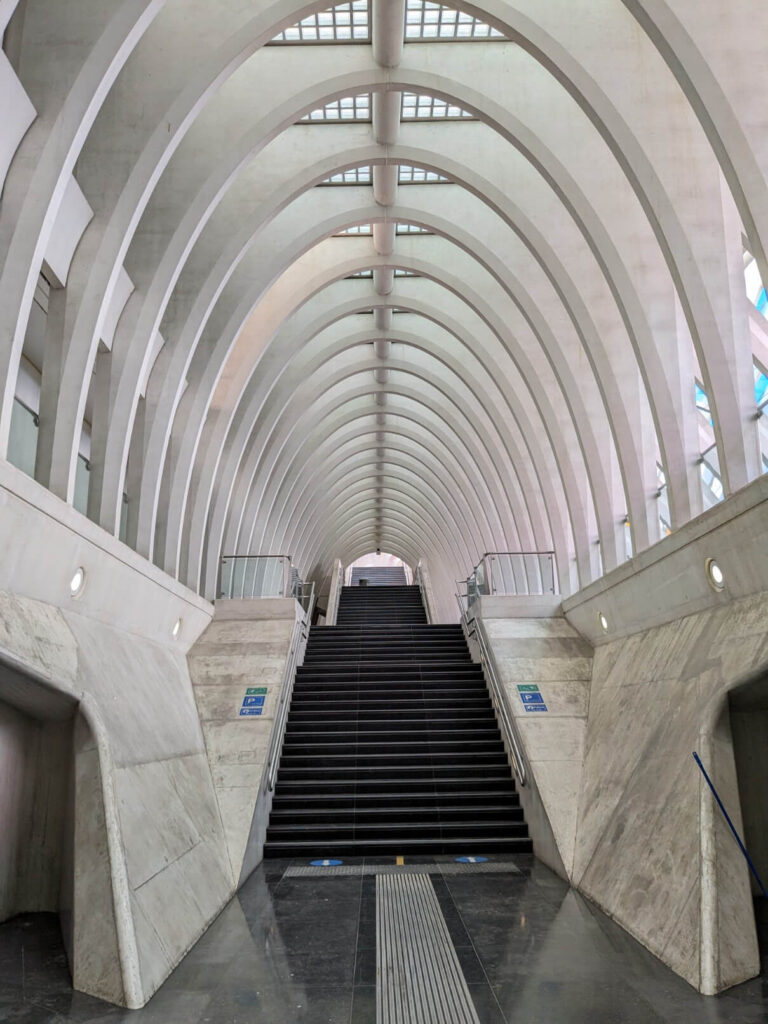

But most of what makes Liege worth visiting is located in the city centre. From the station, it’s around a 25-minute walk to La Carre, which forms the pedestrianised heart of the city. And were it not for the rain and the extensive roadworks, it might have even been a nice walk. (Believe me when I say that the entirety of the city was being dug up for the new tramline – in March 2023.)
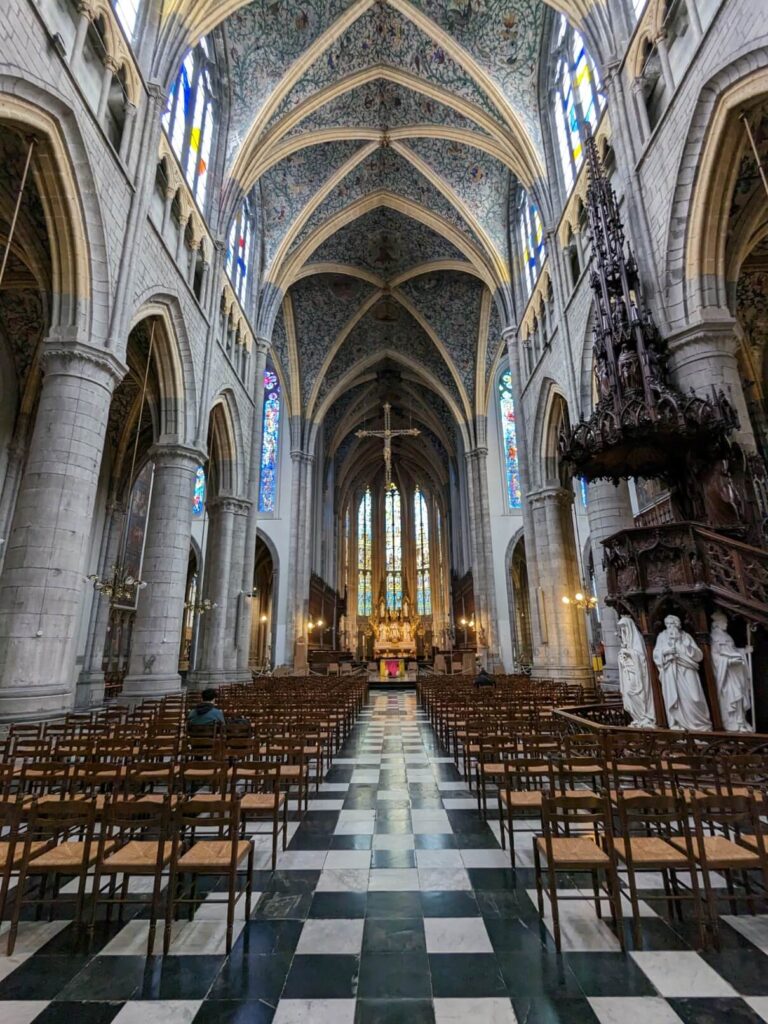
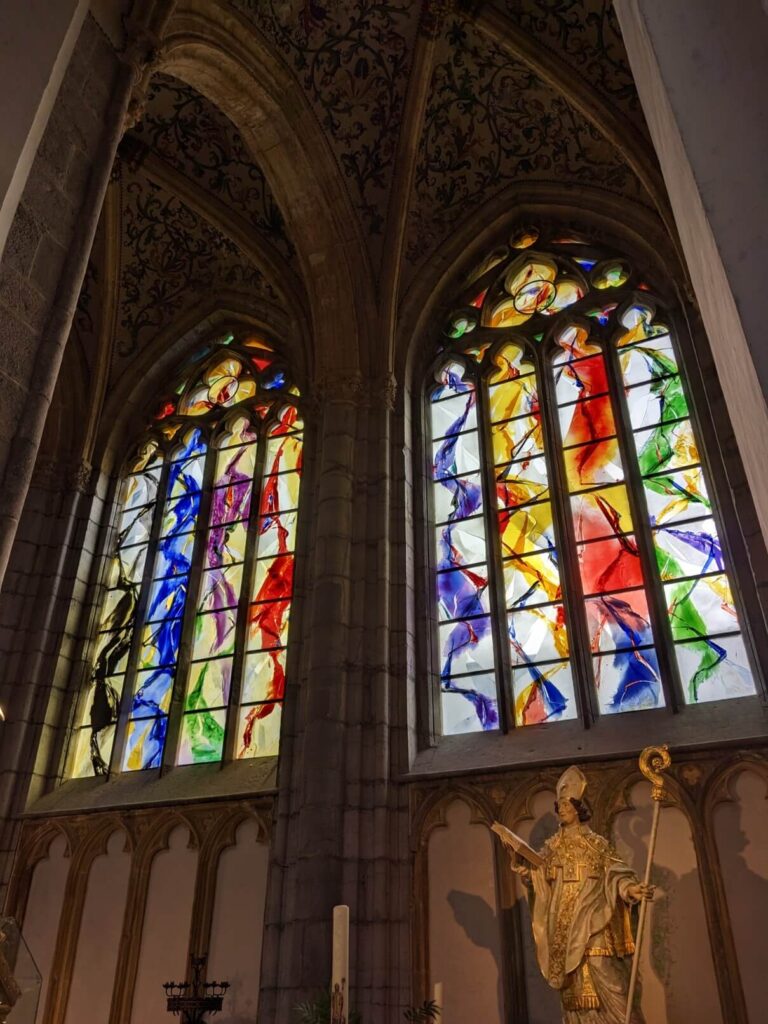
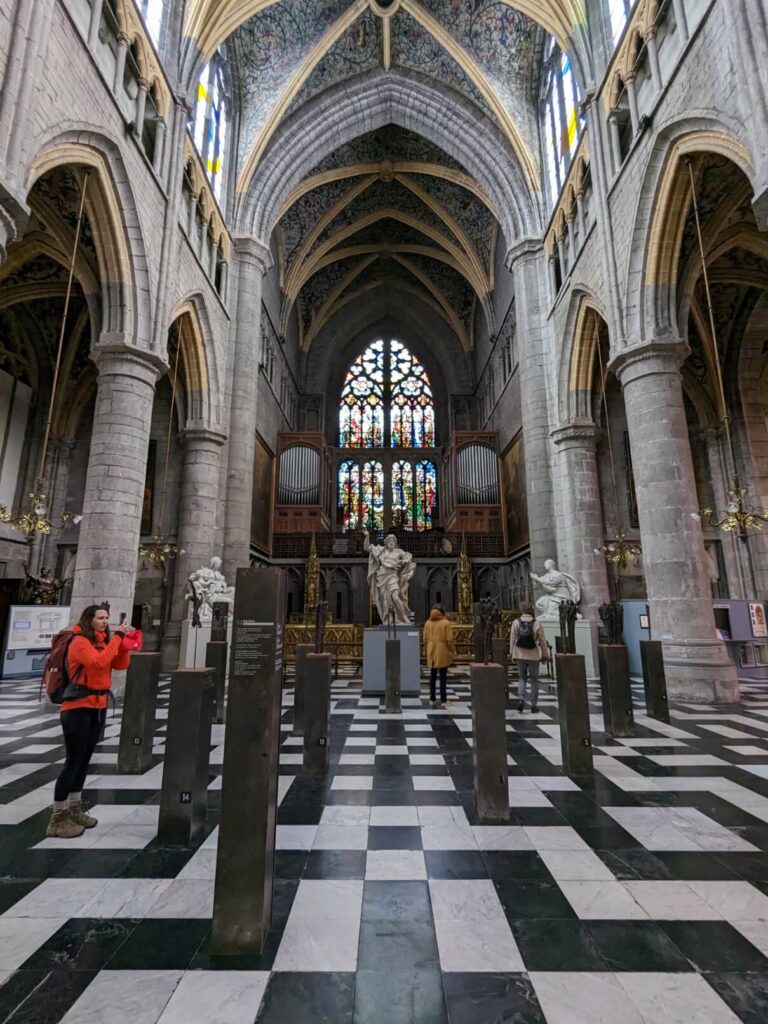
St. Paul’s Cathedral / Liege Cathedral
Our first stop in the centre was St. Paul’s Cathedral. I had absolutely no expectations (I’m not even sure I knew it was there tbh) but I have to say it is probably one of the most beautiful cathedral interiors I’ve ever seen. The cathedral has pristine marble floors of polished black and white (not unlike a large chess board) and several series of vibrant modern-art-inspired stained glass windows. There’s also a lot of information about the history of the building and the artists behind the glass available in English, French, Dutch and German.
There’s also a small exhibit on treasures (which we didn’t visit) and a gift shop (which we did), where we bought some local beers. As you do in a cathedral.
Liege Waffles
After the cathedral, we sampled some fantastic waffles (a must in Belgium, obviously). And it turns out that Liege waffles are particularly special. I’m still unsure why in all honestly, but according to the Visit Liege website, it’s all about the beaded sugar. Either way, there are waffles on sale everywhere, which can not be a bad thing.
The main event: the Montagne de Beuren
After stocking up on some essential waffle-based carbs, we walked over to the main showstopper of Liege: a really big flight of steps. Once voted the world’s most extreme staircase by none other than the Huffington Post, Montagne de Beuren is exactly that – a really massive staircase.
The staircase has 374 steps and was built in 1881 to commemorate the 600 soldiers who died trying to defeat the Duke of Burgundy in the 15th century. In more modern times, battles and noise of any kind are strictly forbidden (you will see multiple signs warning people “not to scream” in multiple languages). If you’re like us, you might also see an ambitious runner who ascended and descended four times (without screaming), just to rub it in.
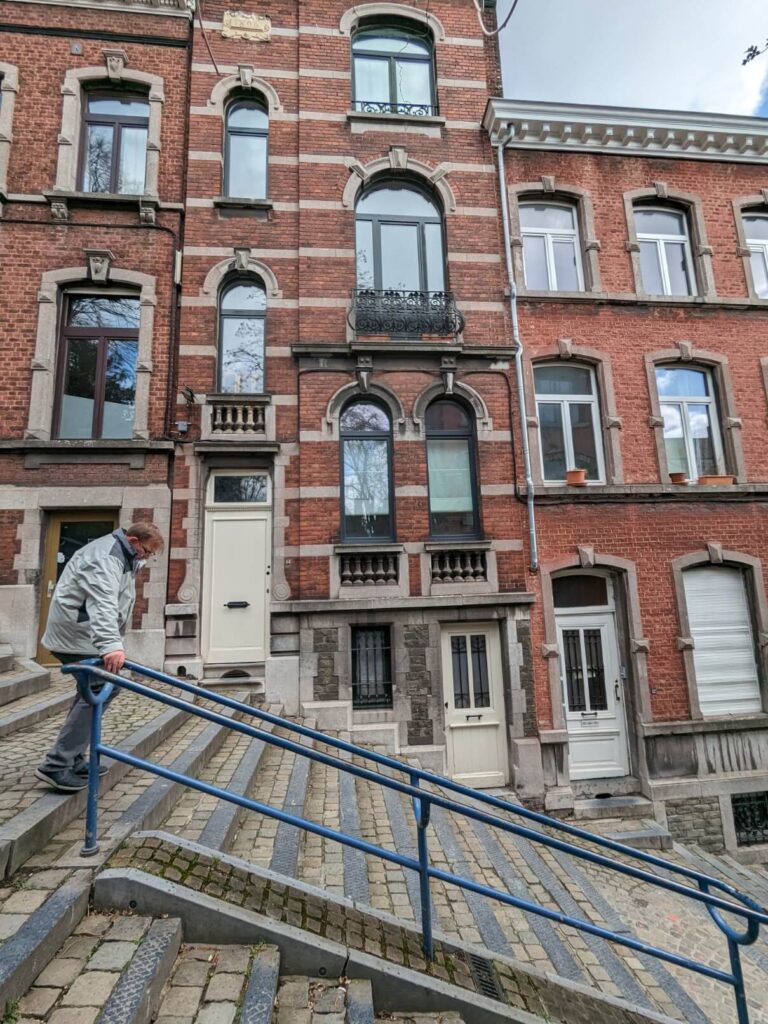
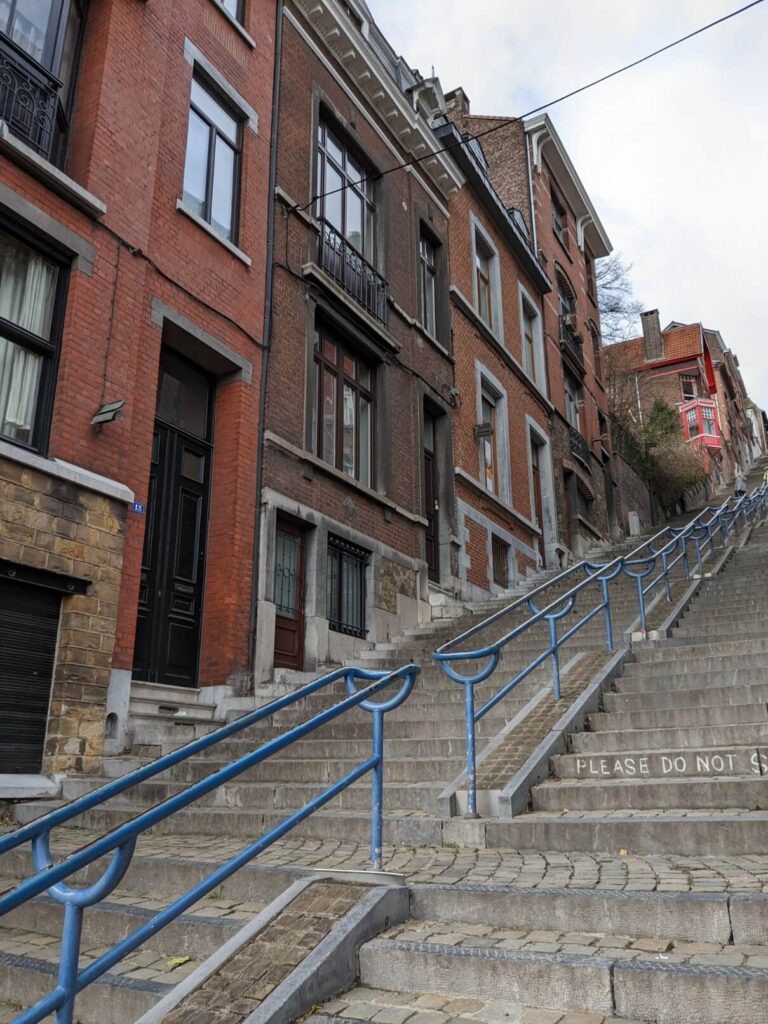
In all honestly though, it’s equally very cool and bizarre, if not just for the fact that there are multiple multi-storey houses built on the steps which begs the question: how would you get a washing machine up those steps?
Climbing the steps is a must for anyone who visits, there is a great view from the WWII monument right at the top and a changing view of the city with each step you climb. Weird, but utterly unique and very cool IMO.
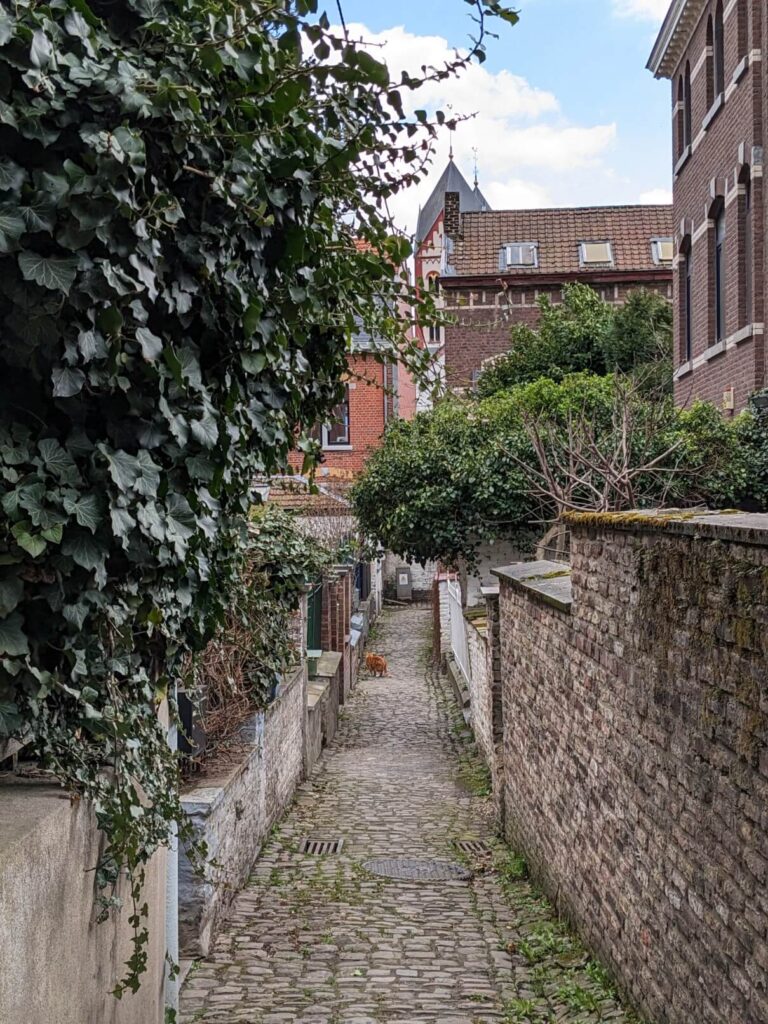
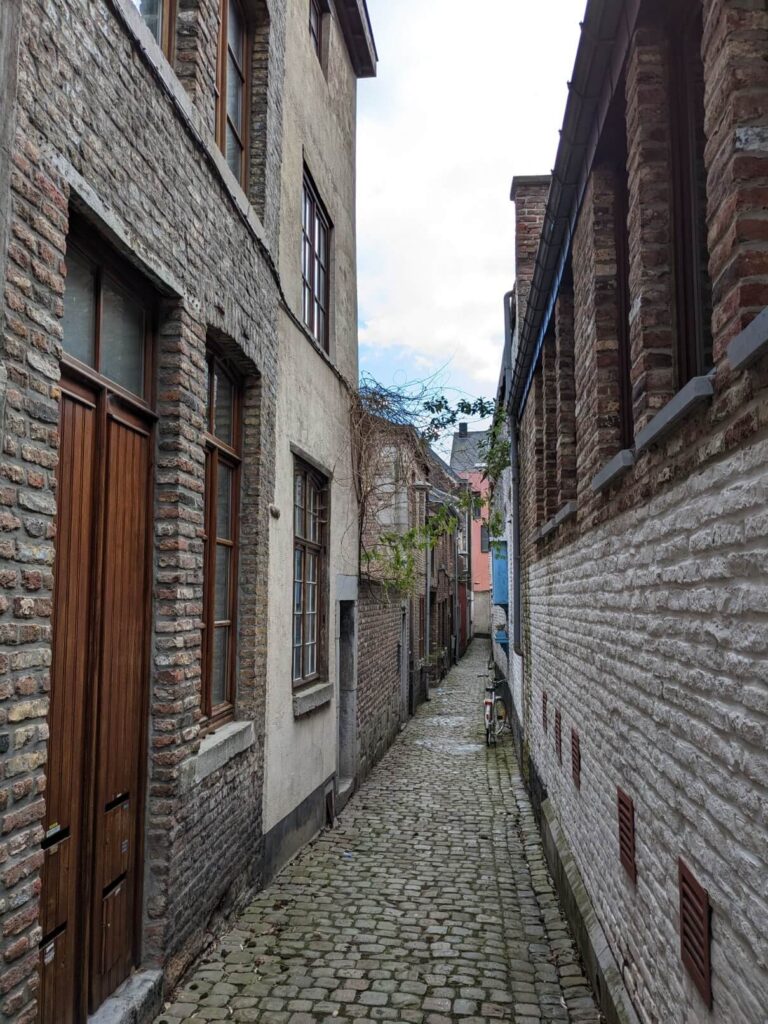
Impasses of Liege
Just around the corner form Liege’s most famous sight is something a lot more understated: a series of narrow, backstreet alleys leading off the busy Rue Hors-Chateau. These romantic narrow walkways feel more like something from another time altogether and often lead to charming little courtyards.
There are a handful of these streets in a small area: Impasse Venta, Impasse de l’Ange, Impasse Hubart and Impasse de la Vignette and Impasse de la Chaine. The entrances on the street are sometimes easy to miss, which is probably want makes these little gems so well hidden.
When visiting, please remember that these routes lead to people’s homes, so please be respectful when it comes to making noise and/or taking photos.
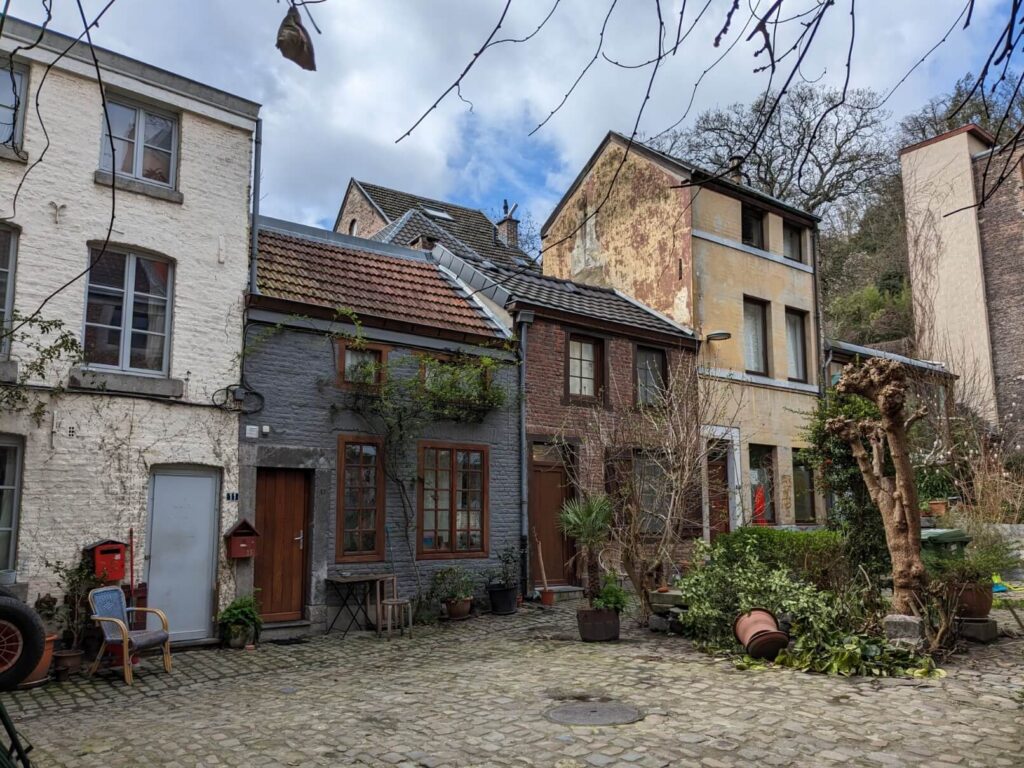
A great bar in Liege: Aux Sottay
Now if you’re anything like us, you’ll be getting peckish by this point (you basically just climbed a mountain after all). We happened upon Aux Sottay simply because it was closeby and well rated, but it one of the things I liked most about Liege. A small, popular and unpretentious bar, Aux Sottay is somewhere that feels instantly both very local and hugely popular with tourists. The barman recommended a couple of local beers to us (I had two and loved one but hated the other and I cannot remember which was which… sorry.)
Besides the chilled atmosphere and friendly people, another great plus about this bar is that they encourage you to pick up food from a popular spot a few doors down and bring it back to the bar to eat.

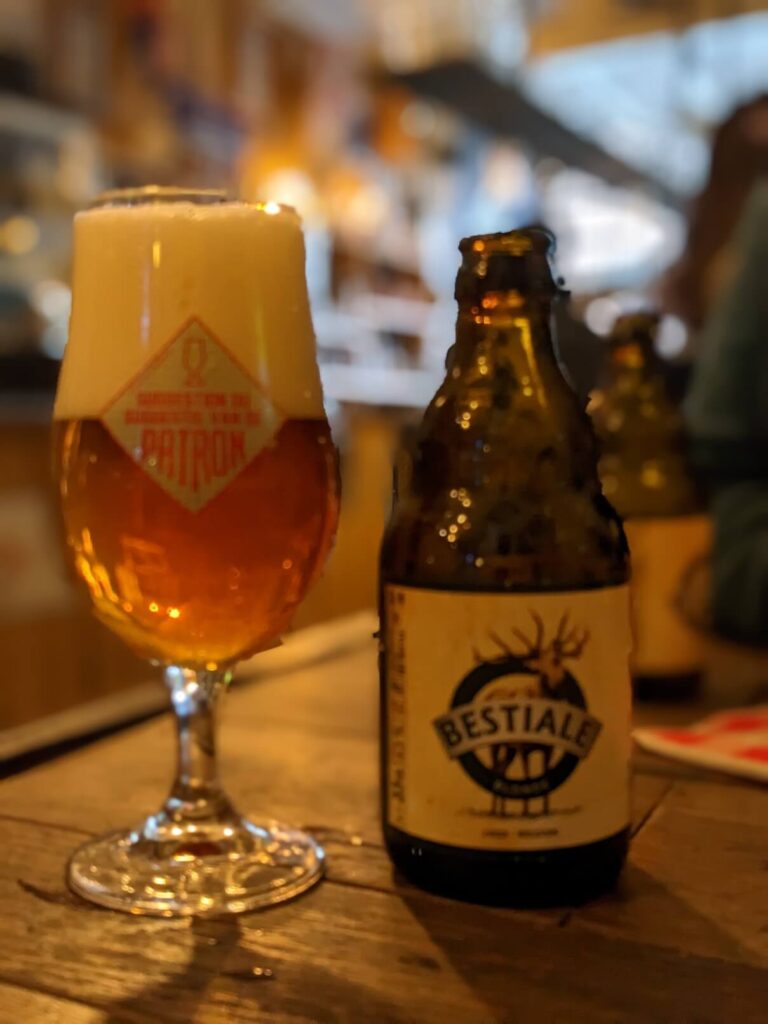
Where to eat in Liege: Rue de Mineurs
Now, this is where it gets a bit complicated. On a street round the corner, Rue de Mineurs, you will find four places that seem to be particularly popular: a sweet pastry shop (which literally had a queue around the corner and a camera crew filming outside while we were passing by), a general bakery, a take-away kitchen/food bar and an ice-cream bar.
It sounds simple (and honestly, it is), but these four places are owned by the same company and have very, very similar (and long) names and almost identical branding and awnings. So it’s essentially like a really lovely one-street mafia (or something less melodramatic). But clearly Rue de Mineurs is the place to be! (There is another café here which also came recommended to me: Constantin Café. We didn’t visit but according to my colleague, it’s a decent place for coffee.)
Food in Liege: Boulets a la Liegeoise
When you google Liege, you’ll find that there is one thing in particular the city seems to be known for: a meat dish called Boulets a la Liegeoise. The dish is basically mixed pork and beef balls in a sweet-sour gravy. It seems to be pretty popular and you can get a serving from Saperlipopette a la patate – La Cuisine – which is exactly what I did. I can’t imagine this is the best version of this dish in the city, but I didn’t hate it. I’d even go so far as to order it again. (The chips are definitely needed to mop up the gravy though.)
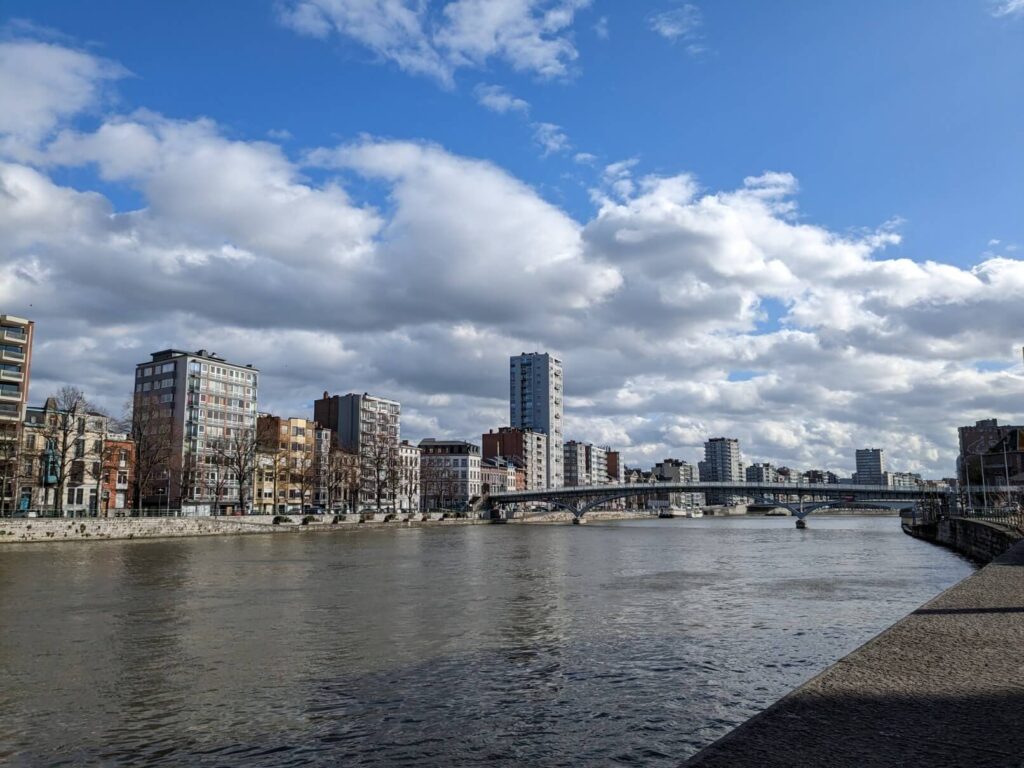
Walk along the river
After an afternoon of drinking local beers and eating local balls, we went for a walk along the river. The general consensus was: Nothing too special but some nice street art to look at.
And to be fair, we did find some really decent street art all around the city. I’ve no idea if Liege is a destination for this but it was certainly a nice addition to our strolling.
Hipster bar: Le Pot au Lait
We then went to another bar which had been recommended to us: Le Pot au Lait. Part dive-bar, part eccentric-hipster-hangout, this place was pretty popular with crowds of all ages and walks of life. It was a great spot for another few beers and the location was nice and central. We visited in early March but it looked like it would be a great spot for sitting outside during the summer months.
Dinner near the station
The only downside to our day was that we left finding dinner a bit too late. We saw a nice Indian on Google maps near the main station and made a bee-line for it (we really love Indian), but it was full (apparently everyone loves Indian.) Instead, we ended up at a really non-descript place hoping to get some mussels (they were out) and so had a bit of a lacklustre end to what was otherwise a great day. Still, we had enough time to get some Belgian beers for the train home.
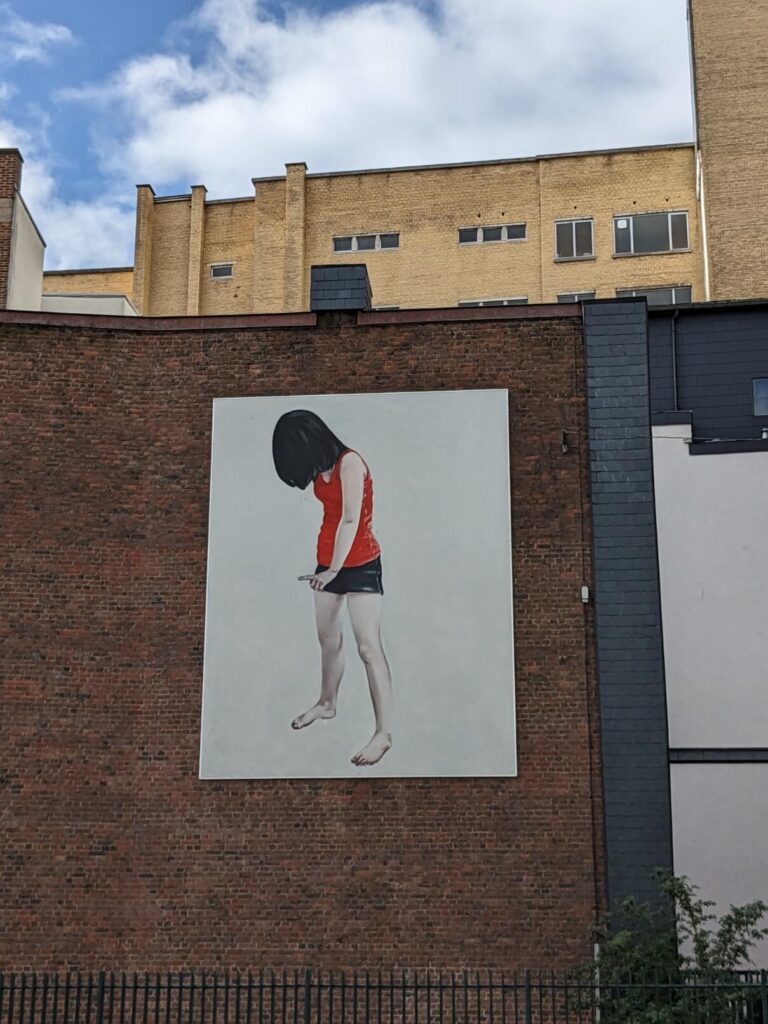

General impressions of Liege
Generally I had a really lovely day in Liege and even writing about it now, several months later, I think I would be perfectly happy to go back and do exactly what we did once again.
So is it worth visiting Liege? Absolutely. The city isn’t packed full of must-see sights, but it has a really relaxed vibe and enough great things to do, eat and drink to make a day trip here more than worth it.
Getting to Liege from Cologne: We got the Flixbus direct from Cologne to Liege for the grand sum of €9 each. The journey takes around two hours. On the return leg, we splashed out for the Thalys train to the tune of €40 each (although I had a voucher to use up), which took just one hour.


